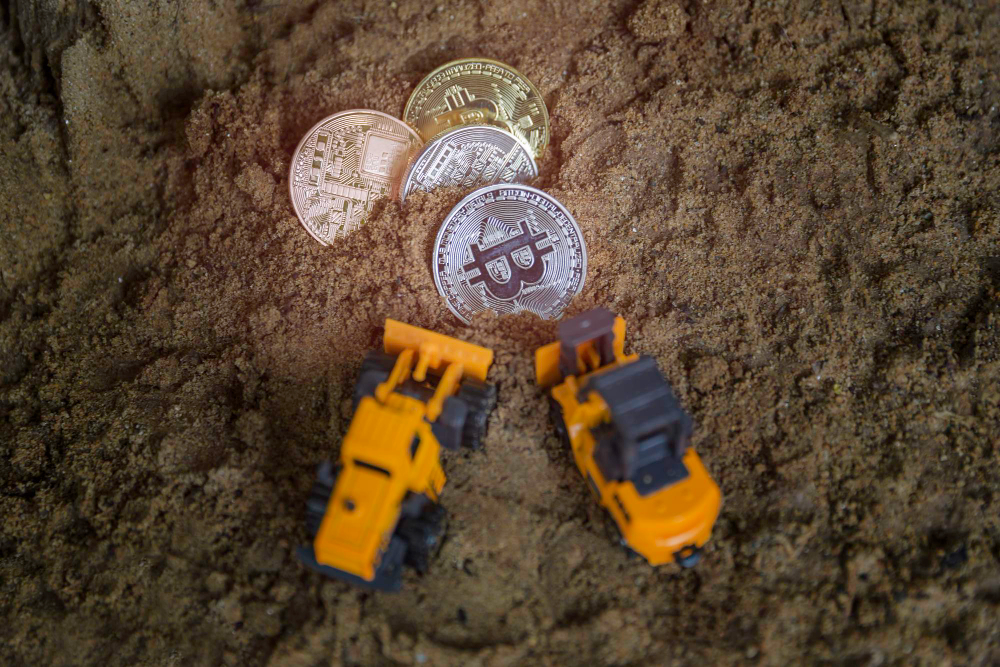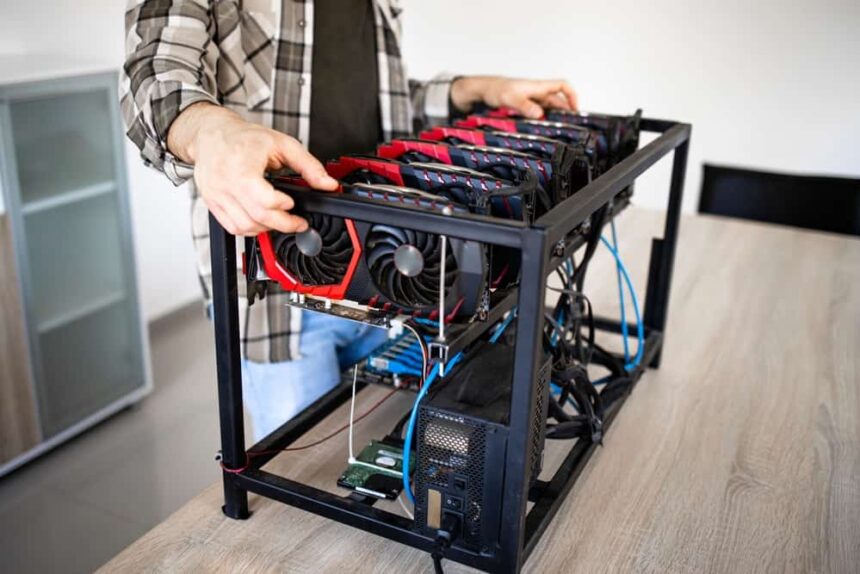The rise of cryptocurrency has opened a new frontier for financial opportunity and digital innovation, and at the heart of this movement lies crypto mining. As more individuals and businesses enter the world of digital currency mining, the need to secure mining operations becomes not just a suggestion but a necessity.
From protecting valuable hardware to ensuring that every coin mined is actually yours to keep, security in crypto mining is a multifaceted topic that deserves close attention. In this comprehensive guide, we’ll dive deep into how you can protect your mining equipment, maintain stable and secure operations, and ultimately safeguard the earnings you’ve worked so hard to generate.
Understanding the Basics of Crypto Mining
Before we get into the protection strategies, it’s important to understand what crypto mining actually entails. At its core, crypto mining is the process by which new units of cryptocurrency are generated and transactions are verified across blockchain networks. This process involves powerful computers solving complex mathematical problems, and in return, miners are rewarded with cryptocurrency tokens.
The most well-known example is Bitcoin mining, but other cryptocurrencies like Ethereum, Litecoin, and Dogecoin also have their own mining systems. As the popularity of crypto mining has increased, so too has the competition. Miners now need sophisticated hardware, efficient software, and secure environments to stay profitable. This competitive landscape makes it even more crucial to protect your operations.
The Importance of Security in Crypto Mining
Security in crypto mining isn’t just about keeping your hardware safe from theft—it’s about ensuring the longevity and stability of your entire operation. A minor oversight could lead to major financial losses. Hackers, malware, hardware malfunctions, and even natural disasters can threaten your crypto mining business.
If your equipment is compromised, it’s not just the cost of repairs you have to worry about. There’s also the potential for lost revenue during downtime, reputational damage, and the risk of losing access to digital wallets and accounts. With thousands or even millions of dollars at stake in larger mining operations, investing in security is a fundamental business decision.
Physical Security for Your Mining Hardware
The first step in securing your mining operation is physical protection. Mining hardware is expensive, power-intensive, and often highly specialized. Graphics cards (GPUs), application-specific integrated circuits (ASICs), and power supply units are all critical components that need to be protected from theft, damage, or malfunction.
If you’re running your operation from home, ensure that your mining rigs are placed in a secure, locked room with restricted access. For those operating at a larger scale, consider installing surveillance systems, entry alarms, and biometric access controls. Keeping unauthorized individuals out of your mining space significantly reduces the chances of tampering or theft.
In addition, make sure your equipment is stored in a climate-controlled environment. Excessive heat or humidity can degrade hardware performance and shorten lifespan. Reliable cooling systems and proper ventilation help to prevent overheating, which is one of the leading causes of mining rig failure.
Cybersecurity Threats to Crypto Mining Operations

While physical security is important, cyber threats pose a more insidious risk. Malware designed to hijack mining rigs—often referred to as “cryptojacking”—can secretly siphon off your resources, using your electricity and hardware to mine crypto for someone else. Worse yet, some advanced attacks can go undetected for weeks or even months.
Securing your mining operation against cyber threats begins with ensuring that all devices connected to your mining network are protected with firewalls and antivirus software. Regularly update your mining software and operating systems to patch vulnerabilities that hackers can exploit. Avoid using pirated mining software, as it often contains hidden malicious code designed to divert your earnings.
Be especially cautious with public Wi-Fi or unsecured networks, as these are common entry points for cyber intrusions. Always use secure, private networks and consider employing a virtual private network (VPN) to encrypt your data traffic and obscure your location.
Protecting Your Crypto Wallets and Earnings
Once you’ve mined cryptocurrency, the next step is storing it safely. This is where crypto wallets come into play. There are two main types: hot wallets (connected to the internet) and cold wallets (offline storage). Each has its own pros and cons, but for long-term storage, cold wallets are considered far more secure.
To minimize risk, it’s best to use a cold wallet for the majority of your holdings, while keeping only a small portion in a hot wallet for daily operations or transfers. Hardware wallets like Ledger or Trezor are widely recommended because they offer strong encryption and offline storage.
Also, remember to back up your wallet’s recovery phrase and store it in a secure location—preferably a fireproof safe or safety deposit box. Never share your private keys with anyone, and beware of phishing scams attempting to trick you into revealing sensitive information.
Monitoring and Managing Energy Consumption
Crypto mining is notorious for its high energy usage. Not only is this a concern for your electricity bill, but it also raises potential safety risks. Overloaded circuits, improper wiring, and insufficient cooling can lead to electrical fires or hardware damage.
To safeguard your mining operation, perform regular electrical inspections and consider hiring a licensed electrician to evaluate your setup. Using surge protectors, uninterruptible power supplies (UPS), and circuit breakers can help to prevent power-related disasters.
Monitoring tools can also give you real-time data on your rigs’ performance, temperature, and energy usage. These analytics not only help optimize efficiency but also alert you to abnormal behavior that might signal a security threat or hardware malfunction.
The Role of Software in Crypto Mining Security
Mining software plays a crucial role in your operation, acting as the bridge between your hardware and the blockchain network. Using reputable and well-maintained mining software is essential to protect against bugs and vulnerabilities.
Some software comes with built-in security features such as automatic updates, two-factor authentication, and fail-safes that shut down rigs in the event of overheating or network breaches. Choose software with active development communities, regular updates, and strong user support.
It’s also a good idea to restrict administrative privileges on mining systems. Limit access to only those who absolutely need it, and enforce strong, unique passwords across all accounts. By reducing the number of people with control over your operation, you limit the potential attack vectors that cybercriminals can exploit.
Insurance for Crypto Mining Equipment
While insurance for crypto assets themselves remains a gray area in many regions, it’s possible to insure your mining hardware against physical damage, fire, theft, and other risks. Some specialized insurers offer policies tailored to crypto miners, particularly those operating in commercial or industrial settings.
Having an insurance policy in place offers peace of mind and financial support in case disaster strikes. When selecting a provider, make sure they understand the specific risks associated with crypto mining and can provide appropriate coverage. Document your equipment thoroughly, including receipts, serial numbers, and photos, to streamline any claims process.
Legal and Regulatory Considerations
Crypto mining exists in a regulatory gray zone in many jurisdictions, and understanding the legal landscape is crucial for protecting your operation. Some countries have banned mining outright due to environmental concerns, while others offer incentives for energy-efficient mining practices.
Operating in a region with favorable regulations not only reduces your risk of government interference but also may provide access to tax benefits or grants. It’s also wise to consult with legal experts familiar with cryptocurrency laws in your area to ensure your setup is compliant with zoning, taxation, and energy regulations.
Community and Network Support
One often overlooked aspect of securing a mining operation is community involvement. Participating in mining forums, Discord groups, and subreddits can provide valuable insights, updates on the latest security threats, and tips for improving efficiency.
Veteran miners often share advice on how to detect cryptojacking, deal with overheating issues, and choose the best firmware. Being active in these communities helps you stay informed and reduces the risk of being blindsided by new forms of attack.
Diversifying Your Crypto Mining Operation
Another way to protect your crypto mining investment is through diversification. This applies both to the cryptocurrencies you mine and the methods you use. Relying entirely on one coin or one type of hardware makes you vulnerable to market shifts or algorithm changes.
By mining multiple coins or using both GPU and ASIC rigs, you can spread out risk and adapt more quickly to changing circumstances. Some miners also switch between coins based on profitability, using automated tools that analyze real-time data to choose the most lucrative options.
Diversification also extends to income streams. Some mining operations supplement their revenue by offering cloud mining services, renting out hash power, or participating in staking and yield farming. These options can help stabilize income during periods of low mining profitability.
Preparing for the Future of Crypto Mining
The crypto mining landscape is evolving rapidly, with emerging technologies and shifting economic incentives reshaping the industry. The rise of proof-of-stake (PoS) models, environmental regulations, and AI-powered optimization tools are all trends to watch.
To remain competitive, miners need to stay ahead of these changes. Investing in newer, more efficient hardware, adopting eco-friendly practices, and integrating advanced monitoring solutions are all steps that help future-proof your operation.
Additionally, consider the growing importance of sustainable mining practices. Renewable energy sources like solar, wind, and hydro are becoming more accessible, and governments may offer incentives to operations that adopt green energy solutions.
Final Thoughts on Protecting Your Crypto Mining Operation
Crypto mining can be an incredibly rewarding endeavor, both financially and intellectually, but it is not without its risks. Securing your operation involves more than just locking the door and crossing your fingers. From physical and cyber threats to legal pitfalls and equipment failures, there are numerous factors that can derail your success if not properly managed.
By taking a comprehensive approach to security—one that includes physical safeguards, cybersecurity measures, energy management, legal compliance, and future planning—you give yourself the best chance at a stable and profitable mining journey. Remember, the goal isn’t just to mine cryptocurrency—it’s to keep what you’ve mined safe and secure for the long haul.
Whether you’re just starting your crypto mining journey or are already running a large-scale operation, implementing these strategies can mean the difference between short-term gains and long-term sustainability. In a field as volatile and fast-paced as cryptocurrency, security is the one investment that always pays off.

